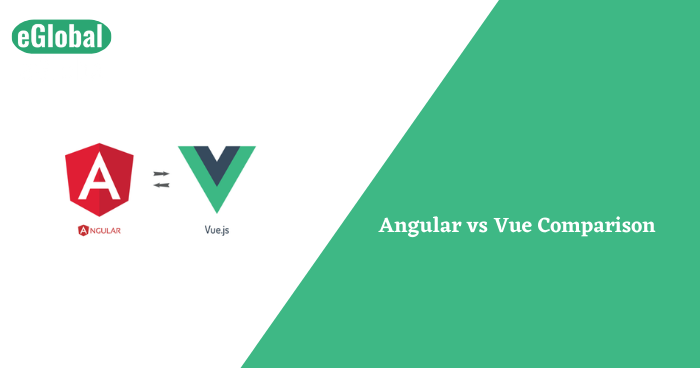

Some of the front-end frameworks that have emerged in the past decade are among the most significant game-changers. before beginning a new project, developers frequently ponder, “What front-end technology should I work with next?” This post compares two of the most powerfulJavascript frameworks, Angular and Vue, from the perspective of a knowledgeable UI front-end developer.
Angular is a typescript-based Javascript framework that facilitates the development of scalable web applications for businesses. It is a front-end framework with built-in tools and libraries that do not affect the application’s size or performance. It offers opportunities for development across all platforms due to its code that can be reused for any deployment target. It has a dynamic UI binding at the plain object or property level and an integral two-way data binding.
Also check: hire angular developers india
Vue is a JavaScript-based framework that offers powerful web capabilities for creating contemporary SPAs and front-end web applications. Vue is also regarded as a flexible and progressive JavaScript framework since it enables the construction of changes in an application’s code without affecting any fundamental features, enabling the creation of progressive UI. Vue provides capabilities to expand the functionality of a web application with custom modules and visual components through its strong decoupling.
Angular has shown that it facilitates better performance in high-performance frameworks. It claims to make apps very speedy and small for unparalleled performance and cut its development time by compiling its components.
The enhanced change detection method and ahead-of-time compilation decrease the time DOM manipulates pre-compiled HTML and application components before the browser downloads and uses them. This may cause the framework’s increased appeal as a Javascript tool for developing high-performance applications.
With each new feature or expansion of a component, The Vue application’s situation becomes unpredictable, making it more difficult for the application to load quicker. Fortunately, this framework includes a virtual DOM, the default tool for improving an application’s speed. Lazy loading is one of Vue’s most notable features. It helps to decrease load times. Vue handles a third-party library asynchronously by automatically managing critical dependencies and separating libraries into those that must be included in the main application bundle and those that can be placed in routes outside the core bundle.
With frequent updates and the release of new functionality to accelerate development, Angular has swiftly evolved to provide a simple development environment and a pleasant user experience.
Following the introduction of Angular 2, it has developed as a critical front-end framework for designing user interfaces and controlling the front-end independently. By bringing the Ivy compiler into its mature form, Angular is on the brink of delivering a superb development experience.
finally, to know more Angular vs Vue Comparison consider connecting with web development company in India

Mar 11, 2024

Mar 6, 2024

Jan 4, 2024

© 2017 All rights reserved.